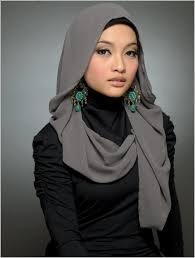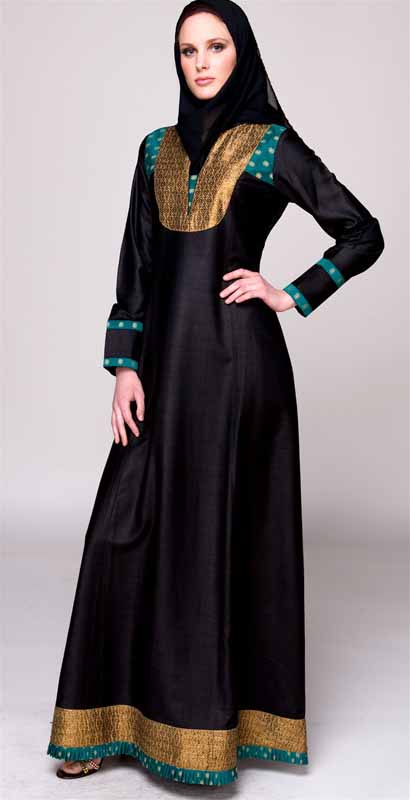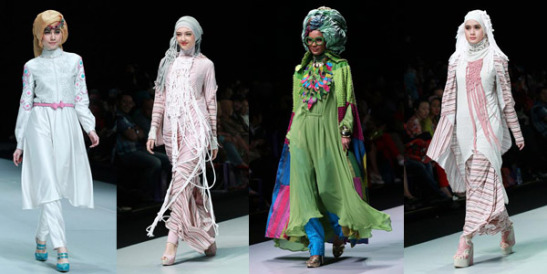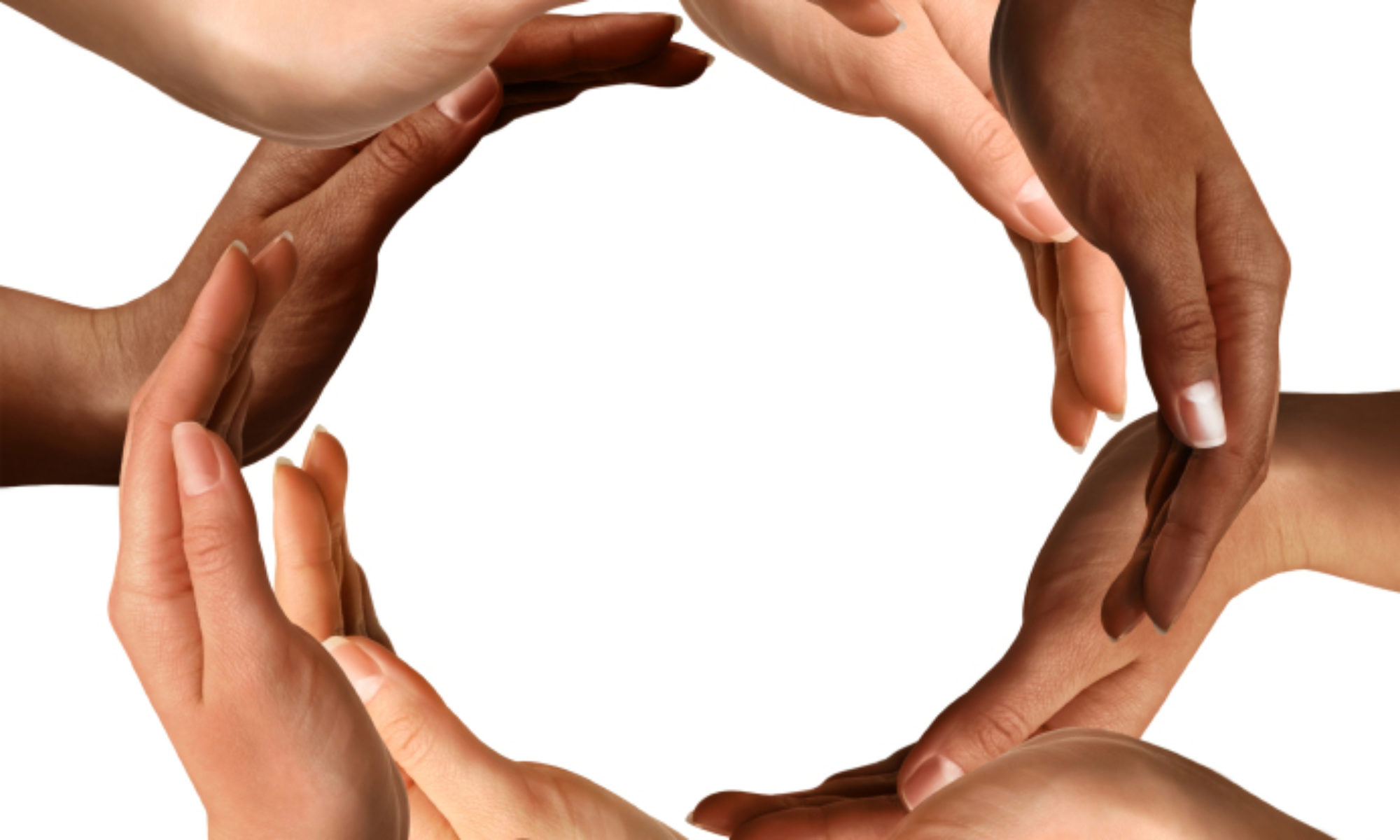Getting the Headscarf Fashion Right

Looking at the Muslim women’s headscarf, one has to examine its origins and how it came about. Every culture dresses to suite their weather and environment. Take European costume, it revolves around any form of pants or hose for men designed to keep one warm in winter and can be pulled up on a hot summers day of 27 degrees. While the Arab men of the Sahar dessert relied on their baggy long thobe, like the dress that Lawrence of Arabia, portrayed by Peter O’Tool, wore. The Australian Aborigines dressed for the weather and never let body image threaten their cultural harmony. Middle Eastern cultures were always vein, I believe that women covered up completely from the sun to protect their skin, all in the name of vanity, the ultimate Slip Slop and Slap. All tongue in cheek of course.
When the prophet of Islam came along, women of certain families with status were known to cover their faces. To dress in this way was a mark of social status and it also allowed women to travel freely and un-accosted from one part of a town or city to the next. The headscarf is not just an Arabic practice adopted by Islam, but also a Jewish one derived from Biblical tradition, this tradition was also one women of the Christian cloth wore.
Nowadays the headscarf is not only a religious statement but also a fashionable one. In the Gulf region, there are plenty of verity of dress that ranges from the affordable to the ultra expensive designer dress wear. The Saudi women
abaya for example is now heavily embroidered and bejeweled; a statement of wealth and class. This trend is also followed by many in the oil rich Gulf region. Women Hijab fashion from other, not so rich regions of Arabia, pale in comparison.

However, the abaya is specifically Gulf oriented and worn differently by different Gulf countries. Iraqi women wear it over their heads, Iranian women designed it as what they call “Chadour”. For the undiscerning eye, the chadour might look like the abaya, however it is not; it is specific to Iran’s cultural brand of Islam. Move further along Muslim Asian Nations and each culture has now imbued their own colour and flavour into their dress code. Indo-Malayans wear colourful long skirts and baggy but stylish short sleeve tops – too much colour for their Arab sisters. The short sleeves is something Arab Muslim women would not dare wear – but the dress code is functional for humid and hot weather. While Cocaz dress code is that for hardy winter wear. Thick fur trimmed scarves and fur trimmed caps. The Gulf abaya, even though black, is surprisingly very cool in the desert heat and is designed to capture a wayward dessert breeze, no matter how small the breeze, it can aerate it’s delicate female wearer. In fact my engineering geek of a husband – one Mr. Dickson- excitedly recounts that in the field of thermodynamics a Black Body is the most efficient at heat dissipation.
Then there is the variety of ways that a headscarf is fixed to the scalp. The headscarves can be pinned back to show a delicate neck, or draped down the neck. Some pin it specifically to cover the chin, others wear a larger headscarf that is designed to drape all the way to the hips, to hide the body shape from view. The face covers, which France has now banned and fines any woman wearing it, has different styles. There is the burqa (Afghani) not to be mistaken by the niqab (Arabic) – and no Afghanistan is not in the Middle East nor are Afghani’s Arabic and it’s not all the same thing. The burqa is as foreign to an Arab as the Scottish black pudding to the snag on a barbee.
Now the headscarf dress code is as elaborate and varied as the culture of the people who adopted Islam and more recently has benefited from modern, Western styles. Again, here in the West, there are a variety of Muslim designers who are targeting Muslim woman and in many cases the working Muslim women market. The style is hip, happening and one Muslim friend of mine confessed she regrets taking the headscarf off. There is actual stylists for headscarf wearers, she exclaimed in excitement at the Muslim Western women’s brave new world. I myself no longer wear it and look enviously at many a stylish girl in a headscarf.
The headscarf can be seen as a deep religious affiliation but there is much more to it. As each style evolved over the past millennium, with Muslim countries having modernised and even Muslim women in the West insist on wearing the headscarf, it has become a personal expression; a personal freedom of expression if you like. This is contrary to Western belief that a headscarf is forced and goes back to the argument of “What woman in her right mind would ever wear a headscarf?” The fact that my friend and I chose to take the headscarf off can demonstrate our personal freedom of choice to wear it,or not.
No matter how many times Muslim women speak up about their choice to wear the headscarf , or not wear the headscarf, the West – for various political agendas and propaganda – which we will not get into – fail to grasp that many a Muslim woman has chosen to wear it for any number of reasons:
- not only for its religious affiliation,
- or as her”feminist” choice to do with her body as she wishes,
- or to challenge established Western ideals of beauty,
but perhaps to demonstrate a freedom of choice and as I’ve demonstrated in the variety of Muslim women wear, a freedom of expression to be viewed culturally or religiously.
This is all the more important to understand when the Western Muslim woman, who has ample choice and freedom chooses to wear the headscarf. They believe in their freedom of expression and freedom of choice as an absolute right in their respective adoptive Western countries. However the frightened mutter, various chatter that is now taking place on social mediums and various attacks -verbal and physical – of Muslim women wearing the headscarf has challenged this assumed “right”. France fines women who cover their faces and have denied public education to girls who wear the headscarf. This is clearly social suicide as everyone knows the way to disadvantage communities is to deny women, who later on become mothers, an education.
The argument many throw as a challenge to the “freedom of expression”, that these women live in the US, therefore they need to assimilate, or if they are Australians, they need to integrate. Regardless of the noise, the arguments, some valid, others fanciful, regardless of the chatter, the fear mongering, some bordering on the abusive, while other is outright criminal; we must remember that no one has the right to take a woman’s freedom of expression nor her right to do with her body as she wishes.

But let us get back to my favourite topic of fashion and specifically headscarf fashion, for getting it right by modern Western Muslim women is essential to keep this alluring, powerful yet fragile freedom of expression attractive. To continue a rich yet ever evolving heritage and tradition of headscarf wearing. For the word “Alluring” is not one used in Western fashion and I believe alluring is the most powerful and beautiful word that could ever be used to describe a woman.

